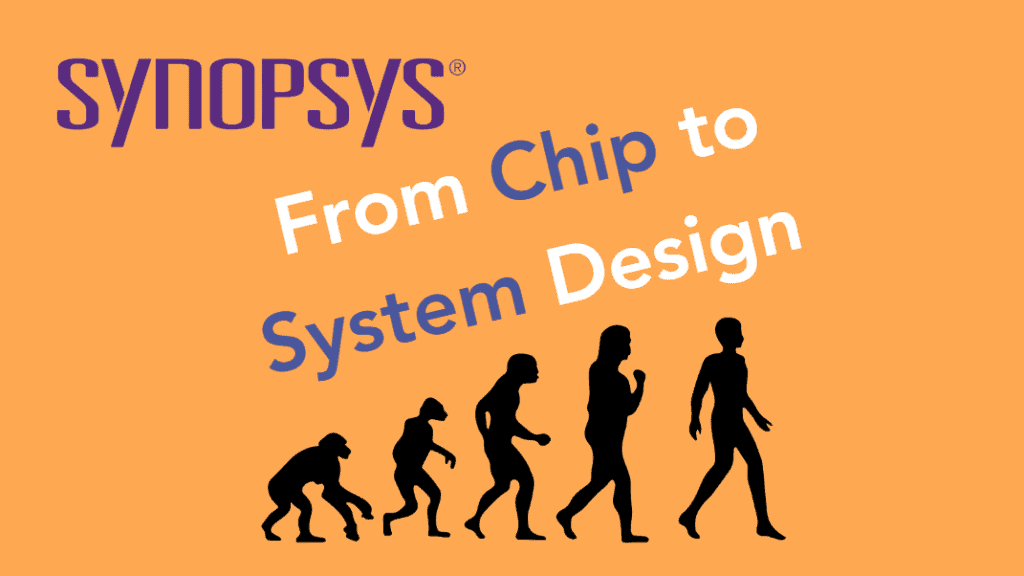
Guest: Sassine Ghazi, CEO at Synopsys
Host:
Junko Yoshida, Editor-in-chief, The Ojo-Yoshida Report
Bolaji Ojo, Managing Editor and Publisher, The Ojo-Yoshida Report
The word, “evolution,” explains the longevity of Synopsys, a leading EDA tool company founded 37 years ago.
Last month, we caught up with Sassine Ghazi, who became the company’s CEO in January 2024.
Synopsys is entering a pivotal year , beginning with the announcement that it would acquire Ansys, an engineering and product design software firm, known for its Multiphysics simulation. The acquisition, valued at approximately $35 billion in a cash-and-stock deal, is among the largest tech deals in recent memory.
For Ghazi, the guiding principles behind this whopper of a deal couldn’t be clearer. Synopsis must transform from “silicon to system design.”
Indeed, the design and engineering space is in upheaval, affecting Synopsys’ customer base and product portfolio
Ten years ago, Synopsys earned more than 90 percent of its revenue from chip companies, said Ghazi. ”Now, 45 percent is coming from system companies.” Customers include hyperscalers, mobile system companies and automotive OEMs.
These system companies have been hiring silicon architects. They all want to design their own electronics systems. And even when they are not actually designing their own chip (by outsourcing it to someone else), these system OEMs are still in the market for electronics design tools.
But they aren’t buying traditional EDA tools for chip design, Ghazi said. They are looking for a “virtual system design environment.” Accordingly, Synopsys has been expanding its portfolio.
For example, Synopsys is offering a system design environment that can enable OEMs to “start architecting their electronic system, verify it and build their software all virtually, even a year before chips become available.”
Even though I have been at Synopsys for 25 years, until three or four years ago, I had never met an automotive OEM, because they had no reason to meet with me.
Sassine Ghazi
In other words, the “silicon to system design” strategy isn’t just a tagline for Synopsys. The phrase encapsulates a movement toward where the tech industry is heading irreversibly.
Building an on ramp to the highway
Ghazi confessed during the video interview, “Even though I have been at Synopsys for 25 years, if you ask me, until three or four years ago, I had never met an automotive OEM, because they had no reason to meet with me. Truly, they had no reasons to meet with Synopsys because we are so deep in the supply chain, and they had no interest.”
In contrast, system companies not familiar with Synopsys have been already using many Ansys’ tools. Ansys is “very well known among system architects,” said Ghazi. They depend on “this stuff” – Multiphysics simulation software for their mechanical and structured dynamics designs. Typically, a carmaker might have bought electronics because they were just components, said Ghazi. “But you’d still have to simulate the system in order to take care of the mechanical aspects.”
With more electronics content going inside a system, “Now we [Synopsys] are becoming a bigger part” of their system design process.” Ghazi describes Synopsys’ role today as “building an on-ramp to the highway.”
In the podcast, Ghazi explains the significant roles design IP played in Synopsys’ business over the last 25 years. Synopsys today is in fact the second largest design IP supplier in the world, only after Arm. Ghazi mentions how that might evolve in a multi-die 3D chiplet IP business.
The discussion also covers how Synopsys is in a position to provide hyperscalers, like Microsoft, with “an optionality” to make their AI chips at different foundries and at different process nodes.
By moving up the food chain, Synopsys expects to grow bigger and faster than its peers.
Junko Yoshida is the editor in chief of The Ojo-Yoshida Report. She can be reached at junko@ojoyoshidareport.com
Copyright permission/reprint service of a full Ojo-Yoshida Report story is available for promotional use on your website, marketing materials and social media promotions. Please send us an email at talktous@ojoyoshidareport.com for details.
